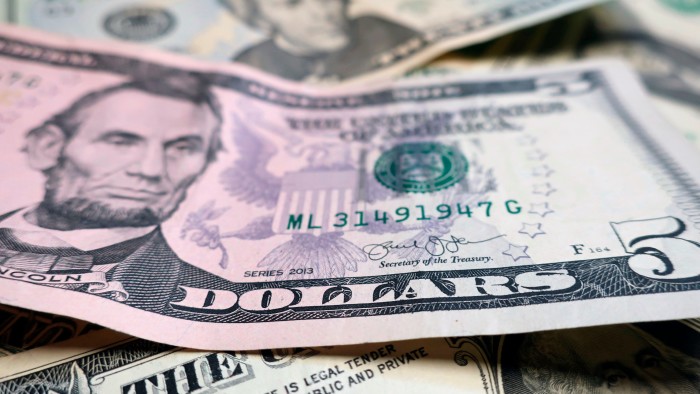Investors should fight the temptation of cash

Roula Khalaf, Editor of the FT, selects her favourite stories in this weekly newsletter.
The writer is chief market strategist for Europe, Middle East and Africa at JPMorgan Asset Management
Cash looks tempting. With interest rates for cash in the region of 5 per cent, why not avoid the volatility that comes with stocks? And with short-rates higher than longer-term interest rates, why lock up cash in a longer-term government bond?
It is easy to sympathise with this sentiment, currently dominating client conversations, particularly with the horrors of last year’s 20 per cent fall in stock and bond prices still weighing heavily on minds. However, shifting to a much larger cash holding in a portfolio would be the wrong thing to do.
Consider three possible scenarios for the global economy ahead: recession, resilience, or stagflation.
The first, and in my view most likely scenario, is that western economies finally cave under the weight of interest rate hikes that have been administered to cure them of inflation. Now that US consumers have exhausted much of their pent-up savings, and pandemic fiscal handouts are finally being removed, they will start to tighten their belts. Falling commercial and residential property transactions and a weaker labour market will in turn feed the dynamics of a “normal” recession.
In this scenario, the cash rate does not stay at today’s elevated levels as central banks, convinced their work is done, start to ease their foot off the brake. Bond markets factor in more interest rate cuts than are currently priced, which would send bond prices higher. An investor who bought a 10-year US Treasury bond at a yield of 4.5 per cent would see a total return of roughly 13 per cent if that yield fell 1 percentage point over 12 months. If the recession ended up being relatively nasty and the yield fell 2 percentage points, their return would exceed 20 per cent.
In the second scenario, developed economies remain resilient. Though not my base case, it is possible that consumer spending remains robust in the US and even begins to pick up in the UK and eurozone, as consumers get a boost from lower headline inflation. And those governments seeking to be re-elected next year could opt for some fiscal sweeteners.
So long as this demand resilience does not lead to reaccelerating inflation, cash rates are unlikely to rise much further but would stay elevated. Cash would prove to be the better choice than government bonds as the market comes around to the idea that interest rates will stay high for an even longer period of time and bond prices fall. That said, segments of the stock market should considerably outperform cash.
Given relatively low valuations, sectors like global financials would get a considerable boost from the notion that economies can cope with higher interest rates and sustainably steeper yield curves. Small cap stocks — currently trading on valuations well below historical averages — would also get a boost from the realisation that the underlying health of the economy is good. Put simply, cash rates will only stay elevated if the economy is in very good underlying health, in which case all asset returns would have shifted to a higher plane.
The third scenario, and the one to which I assign the least probability, is stagflation: in this, inflation reaccelerates to the point where it really looks like we’re back in the 1970s. This would essentially be a rerun of the macro turmoil that occurred in 2022 and would most likely equate to a repeat of the market chaos that year. Stock benchmarks like the S&P 500 and FTSE 100 would fall as investors factored in materially weaker corporate earnings. Government bond prices would also fall as investors anticipated even higher interest rates. Even inflation-linked bonds could not be relied upon.
However, there are still options that would outperform cash, certainly in nominal terms and even in real terms. In public markets, commodity stocks are the most obvious solution, though some investors may be reluctant to “overweight” this sector on sustainability grounds. The best cash-beating solutions would be found in private markets.
In 2022, when the S&P 500 was down 18 per cent and the global aggregate bond index down 16 per cent, global core infrastructure provided a positive total return of 10 per cent and timber one of 13 per cent. These are some of the few assets that can offer inflation protection and positive real returns in a stagflationary environment.
One of the hardest parts of investing is not letting the heart over-rule the head in times of uncertainty. High short-term interest rates are exacerbating a natural desire to hunker down in cash. Investors should fight this temptation. Now, as much as ever, cash is unlikely to be king.

Comments